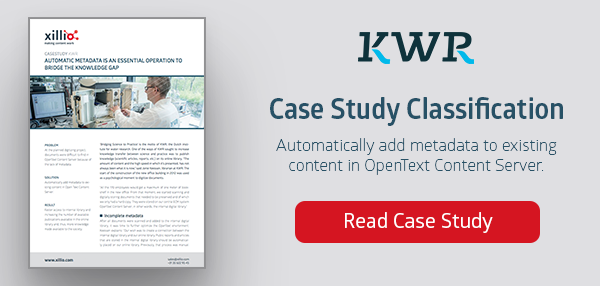Classified information for everyone
by Evan Goris, on Apr 9, 2014 1:00:00 PM
A note on the difference between classified information in the sense of confidential, and classified information meaning grouped, categorized, and labeled. Access and editability are highly restricted in the former, while the latter makes information readily available for reading and writing.
When I hear the term 'classified information', my thoughts turn to X-Files and British spies. In this context if information is classified, it is confidential, hence unavailable to most people. The small group that can access it usually may not edit the contents.

Our idea of classified
When we speak about classifying information, we mean something entirely different. Rather than confidential, we mean grouped, categorized, and labeled. Data can be broken down according to for example its topical content, file type, and content owner. The data breakdown can be associated with the content using metadata.
Visible and findable
We believe classifying content sets it free: it makes information visible and findable. And it allows for the technical implementation of security and compliance processes needed in many enterprise settings.
Available and editable
In this respect, the purpose of getting information classified is exactly the opposite compared to the espionage-associated 'classified information'. Content classification ensures the information becomes available to as many people as needed. And correctly classified information can easily be embedded into workflows, allowing for the content to be edited as needed.
-----------------------------------------------------------------------------------------





%20(300%20x%2060%20px)%20(3).png?width=635&height=127&name=ISO%20email%20signature%20(390%20x%2060%20px)%20(300%20x%2060%20px)%20(3).png)